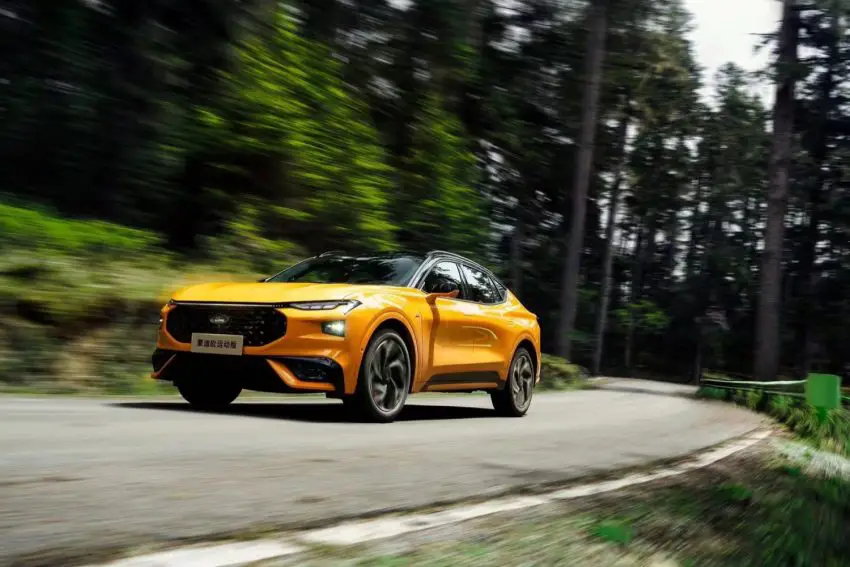Beyond BMW And Porsche: Foreign Automakers Facing Headwinds In China

Table of Contents
Intensifying Domestic Competition
The rise of homegrown Chinese automotive giants like BYD, NIO, and Xpeng is fundamentally reshaping the competitive landscape. These domestic brands are not simply playing catch-up; they are actively innovating and disrupting the market, posing a serious threat to established foreign players.
Technological Innovation
Chinese brands are making rapid strides in crucial areas of automotive technology, directly competing with, and often surpassing, foreign counterparts.
- Superior battery range and charging infrastructure: Domestic EVs frequently boast longer ranges and benefit from a rapidly expanding charging network across China, addressing a major concern for potential buyers.
- Advanced driver-assistance systems (ADAS) at competitive prices: Chinese manufacturers are offering sophisticated ADAS features, including autonomous driving capabilities, at price points that are difficult for foreign brands to match.
- Strong government support for domestic EV brands: Significant government subsidies, tax breaks, and preferential policies are bolstering the growth and competitiveness of Chinese EV brands.
Brand Loyalty and Nationalism
A surge in national pride is fueling a preference for domestically produced vehicles. This shift in consumer sentiment is a powerful force impacting the market share of foreign automakers.
- Marketing campaigns emphasizing patriotism and supporting local industries: Chinese brands effectively leverage nationalistic sentiment in their marketing, appealing to a growing sense of patriotism among consumers.
- Government incentives favoring domestic car purchases: Government initiatives encourage consumers to buy domestically produced cars through tax breaks and other incentives, further boosting the popularity of local brands.
- Improved quality and reliability of Chinese-made cars eroding the perception of foreign superiority: The perception of superior quality and reliability associated with foreign brands is diminishing as Chinese manufacturers improve their products.
Shifting Consumer Preferences and Demands
The Chinese automotive market is becoming increasingly sophisticated and demanding, presenting new challenges for foreign automakers accustomed to different market dynamics.
Focus on EVs and New Energy Vehicles (NEVs)
The rapid adoption of electric vehicles (EVs) and other New Energy Vehicles (NEVs) is forcing a significant shift in the industry. Foreign automakers are under immense pressure to adapt.
- Need for significant investment in EV infrastructure and production: Foreign players need to invest heavily in establishing EV production facilities and charging infrastructure to compete effectively.
- Competition from Chinese brands specializing in EVs: Chinese brands have a head start in the EV market, specializing in electric vehicle technology and benefiting from government support.
- Pressure to meet stringent NEV quotas set by the Chinese government: The Chinese government has implemented quotas for NEV sales, putting immense pressure on foreign automakers to increase their EV offerings.
Price Sensitivity and Value-for-Money
Chinese consumers are highly price-sensitive, demanding value for their money. This necessitates a strategic approach to pricing for foreign automakers.
- Difficulty maintaining profit margins in a highly competitive market: The intense competition makes it challenging for foreign brands to maintain desirable profit margins while offering competitive prices.
- Need for localized production to reduce costs: To compete effectively on price, foreign companies need to establish local manufacturing facilities to reduce production and transportation costs.
- Balancing luxury brand image with competitive pricing: Luxury brands face a particular challenge in balancing their premium image with the price sensitivity of the Chinese market.
Regulatory Hurdles and Trade Tensions
Navigating China's complex regulatory landscape and potential geopolitical issues poses significant challenges for foreign businesses operating in the automotive sector.
Stringent Emission Standards and Regulations
China's increasingly stringent environmental regulations add substantial costs and complexities for foreign automakers.
- High investment needed to meet stringent emission standards: Meeting the increasingly strict emission standards requires significant investment in research, development, and technological upgrades.
- Potential for penalties for non-compliance: Failure to comply with these regulations can result in substantial financial penalties.
- Impact on vehicle design and technology choices: The need to meet emission standards influences vehicle design, technology choices, and the overall production process.
Geopolitical Uncertainty and Trade Disputes
Ongoing trade tensions between China and other nations introduce uncertainty and potential disruptions for foreign automakers.
- Impact on supply chains and import costs: Trade disputes can disrupt supply chains and increase import costs, impacting profitability and production schedules.
- Potential for tariffs and trade restrictions: Tariffs and trade restrictions can significantly increase the cost of importing vehicles and components into China.
- Need for robust risk management strategies: Foreign automakers need strong risk management strategies to mitigate the impact of potential geopolitical risks.
Conclusion
The Chinese automotive market, while still immensely important, presents unprecedented challenges for foreign automakers. The combination of rising domestic competition, evolving consumer preferences, and complex regulatory and geopolitical factors creates considerable headwinds. To thrive in this dynamic environment, foreign companies must adapt their strategies aggressively, invest substantially in EVs and cutting-edge technologies, and expertly navigate the political and economic landscape. Understanding these headwinds facing foreign automakers in China is paramount for long-term success. Are you prepared to address the challenges for foreign automakers in China? Learn more about navigating the complexities of the Chinese automotive market and developing a robust, competitive strategy for your brand.

Featured Posts
-
 Valentina Shevchenko Considers Zhang Weili Superfight
May 11, 2025
Valentina Shevchenko Considers Zhang Weili Superfight
May 11, 2025 -
 Key Aaron Judge Analytics Predicting Yankees Success In 2025
May 11, 2025
Key Aaron Judge Analytics Predicting Yankees Success In 2025
May 11, 2025 -
 The Business Of Comedy Analyzing Adam Sandlers Net Worth
May 11, 2025
The Business Of Comedy Analyzing Adam Sandlers Net Worth
May 11, 2025 -
 Guilty Plea Lab Owner Falsified Covid 19 Test Results
May 11, 2025
Guilty Plea Lab Owner Falsified Covid 19 Test Results
May 11, 2025 -
 El Sorprendente Incidente De Boris Johnson Con Un Avestruz En Texas
May 11, 2025
El Sorprendente Incidente De Boris Johnson Con Un Avestruz En Texas
May 11, 2025
